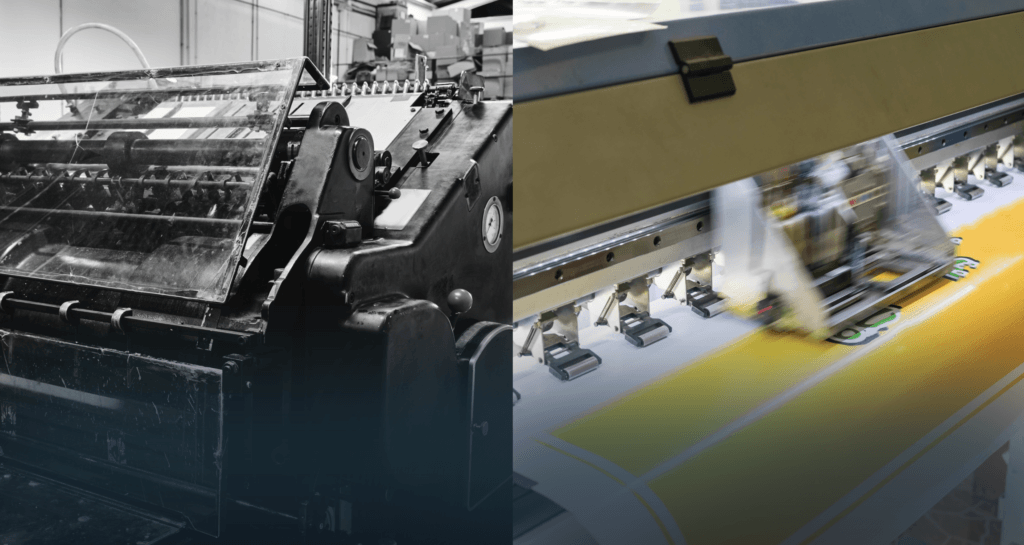Have you ever wandered through a bookstore, intrigued by the variety of paperback book sizes on the shelves? Ever pondered the reasons behind their evolution?
Dive in as we take you on a journey through the history of paperback sizes, exploring the factors that have shaped their design and format over the years.
Whether you’re a tech enthusiast, an eco-warrior, or simply someone who cherishes a gripping read, the evolution of the humble paperback has something to capture your interest.
Some of the links on this page are “affiliate links.” This means if you click on the link and purchase the item, we will receive an affiliate commission at no extra cost to you. Please visit our Affiliate Disclosure page for more information.
Early History of Paperback Books: Setting the Standard
Paperbacks aren’t a new thing. They’ve been around since, oh, the 19th century. Remember hearing about those “yellowbacks” from the UK or “dime novels” in the US? No?
Well, picture cheap, juicy stories sold at train stations and kiosks—kinda like the olden days version of binge-watching a TV series. They were the “grab and go” of their time.
Made reading a whole lot more democratic, too. Suddenly, everyone could afford to dive into a good story, not just the well-off folks.
You know, before streaming and podcasts, people needed their entertainment on the go. And that’s where our trusty paperbacks come into play.
They’re like the ancestors of our smartphones! Now, let’s hop into our literary time machine and see how these handy-dandy books came about.
The Shift from Hardcover to Paperback
So, as paperbacks started making some noise, folks loved how light they were on the pocket. Suddenly, reading wasn’t just for the posh crowd with fancy libraries. Now, anyone could snag a book without breaking the bank.
But, of course, not everyone was on board from the get-go.
A lot of the old-timers and die-hard book lovers gave these new “flimsy” books the side-eye. “Are they even going to last?” many wondered, looking at those soft covers and thinking they’d fall apart in no time.
And, let’s be real, there was a bit of a vibe that these cheaper books might be, well, “cheap” in more ways than one.
But, as the years rolled on, paperbacks became the cool kids on the block. They got tougher, looked better, and people started realizing they weren’t just about saving a few bucks.
They were easy to carry, fun to read, and every bit as good as their hardback cousins.
Europe’s Trendsetting Moment
Flash over to Europe, 19th century. As we mentioned, in the UK, they had these flashy books called “yellowbacks.” And yep, you guessed it, they had bright yellow covers.
Like the tabloids of their time, these were sold at train stations, perfect for spicing up a commute. Meanwhile, the US wasn’t to be left behind. They rolled out “dime novels”—action-packed tales that cost, well, a dime.
Paperback’s Big Break
Fast-forward to the 20th century, post-World War II. This was the blockbuster era for paperbacks. Big names like Penguin and Pocket Books started churning out all kinds of stories in this format.
Fun fact: these books were designed to fit snuggly in a cargo pocket. Why? Soldiers during the war got these mini-books to keep them company, and guess what? When they came home, the trend stuck.
Size Does Matter (At Least For Costs)
Here’s some behind-the-scenes magic for you: the size of these early paperbacks wasn’t some wild guess. It was all about the moolah. Publishers figured out that if they printed on large sheets and then sliced them up, they’d save some serious cash.
This budget-friendly approach gave birth to our beloved “mass-market paperback.” Think of it as the early version of a bargain bin—but way cooler.
So, now you know. The paperbacks we casually pick up today have a rich tale behind them—driven by the desire to make reading accessible, easy on the pocket (literally and figuratively), and oh-so-convenient.
Factors Influencing Paperback Size Variability

Grab a cup of coffee and let’s go over the other factors influencing size differences.
Old-School Printing Challenges
- The Early Days: Picture it: old-time printers, limited to churning out specific sizes, and then trying to bind them without them falling apart. Sounds like a fun challenge.
- Tech to the Rescue: Fast forward a bit, and printing got a techie upgrade. Suddenly, it wasn’t just one-size-fits-all. Printers could handle all sorts of paper dimensions, and binding? Oh, they got fancier too. This tech glow-up meant publishers could play around with book sizes.
It’s All About the Readers
- What’s Your Book Style? Think about it. Some like their books pocket-sized for the train ride, while others want big, bold editions for their coffee tables. And publishers? They’re all ears.
- What The Surveys Say: Turns out, folks like their books to be easy to carry AND comfy to read. So, publishers have been tailoring sizes to be just right for long reads without the hand cramps.
Retailers Throwing Their Weight
- Shelf Space Shenanigans: Ever tried fitting a square peg in a round hole? That’s what it’s like for bookstores. They’ve got those standard shelves, and some book sizes just fit better.
- Big Store Demands: Enter big box stores, with their big demands. They often want books of a certain size, making everything look neat and uniform. And when these big players ask, the publishing world listens.
Genre and Content: The Size Makers
- Genre-Specific Sizes: Noticed how romance novels are usually pocket-sized while those graphic novels are big and flashy? That’s by design. Each genre has found its ‘fit,’ size-wise.
- Content Calls the Shots: Imagine cramming “War and Peace” into a pocketbook. Not happening! Some stories need space to breathe, and their size reflects that.
Money Talks
- Bigger Isn’t Always Better: Here’s a tidbit: making larger books costs more. More pages, more ink—more money. But smaller ones? Oh, they can be churned out in big numbers, saving some serious cash.
- Standing Out (or Fitting In): In a sea of books, how do you get noticed? Some publishers play with sizes to make a splash, while others prefer their books to blend right in.
So, there you have it—a whirlwind tour of why paperbacks come in all shapes and sizes. It’s not just random; there’s a method to the madness, influenced by everything from old tech to modern market demands.
Navigating the Bookstore: A Guide to Book Sizes

Let’s talk about three popular book sizes that you’ve likely had bumped into at one point or another.
Mass Market Paperbacks: The Pocket Heroes
- What they look like: Picture a compact book, about 4 by 7 inches. These guys are the sturdy ones, made to survive the hustle and bustle. You’ve likely seen them at the airport or the checkout line at the store.
- Why So Popular?: Honestly, they’re pretty cheap, which is great for the wallet. Plus, they’re small enough to toss in a bag, making them awesome travel buddies.
Trade Paperbacks: A Bit of Posh Reading
- Spotting Them: These are the slightly bigger, fancier ones, usually around 5.5 by 8.5 inches. Better paper, snazzy cover designs – the works.
- The Pros and Cons: Bigger text and better spacing mean your eyes won’t strain. They feel good to hold and look better on the shelf. But, they’re a bit pricier and maybe not as easy to carry around as the smaller ones.
Coffee Table Paperbacks: The Showstoppers
- What Are They?: Big, beautiful, and meant to be flaunted. Think of them as art pieces you can leaf through while sipping your coffee.
- Why Have One?: They’re not just books; they’re conversation starters. Perfect for genres that are all about the visuals like art, travel, and fashion. Got guests over? This book might just steal the show.
So, the next time you’re at the bookstore, you’ll know the deal with these sizes. Whether you’re looking for a quick read, a classy novel, or something to make your living room pop, there’s a book size just for you.
Conclusion
And there you have it! From pocket-sized reads to sprawling narratives that demand more space, the story behind the sizes of paperbacks is as diverse and fascinating as the tales they hold within their pages.
Each time you pick up a book, be it a compact thriller or a hefty historical tome, take a moment to marvel at the journey it represents.
The world of publishing, with its myriad choices and innovations, is a testament to human creativity and our undying love for stories. So, keep that curiosity alive, and always remember: every book has more than one story to tell. Happy reading!
Video Summary
I have created a summary video for this blog post. If you like this video, consider subscribing to the Pioneer Publishing Youtube Channel.

